Year 9 Linear Functions Worksheets
Crack the Code - Straight Line Graphs
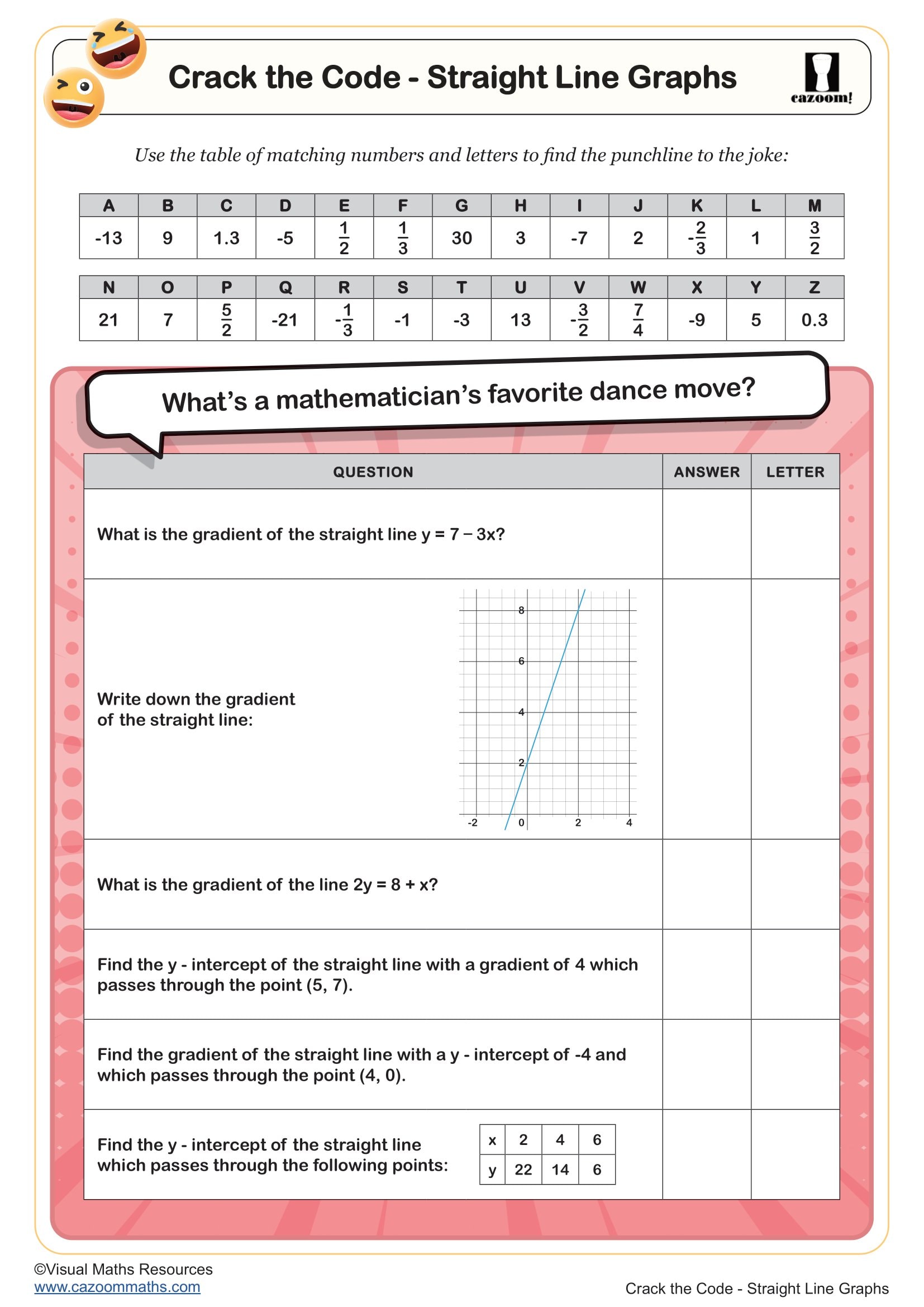
Does the Point Lie on the Line?
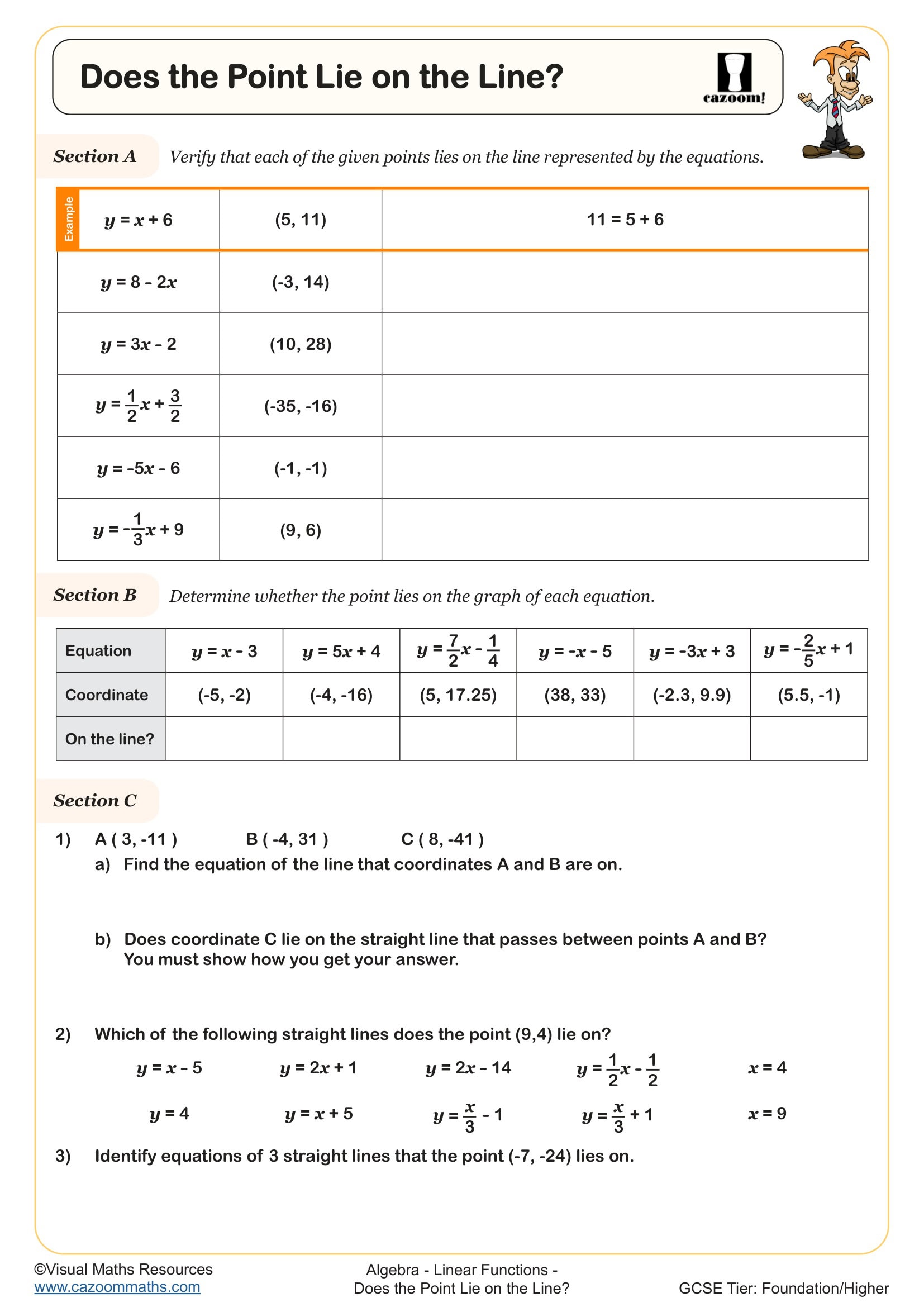
Drawing Gradients (A)
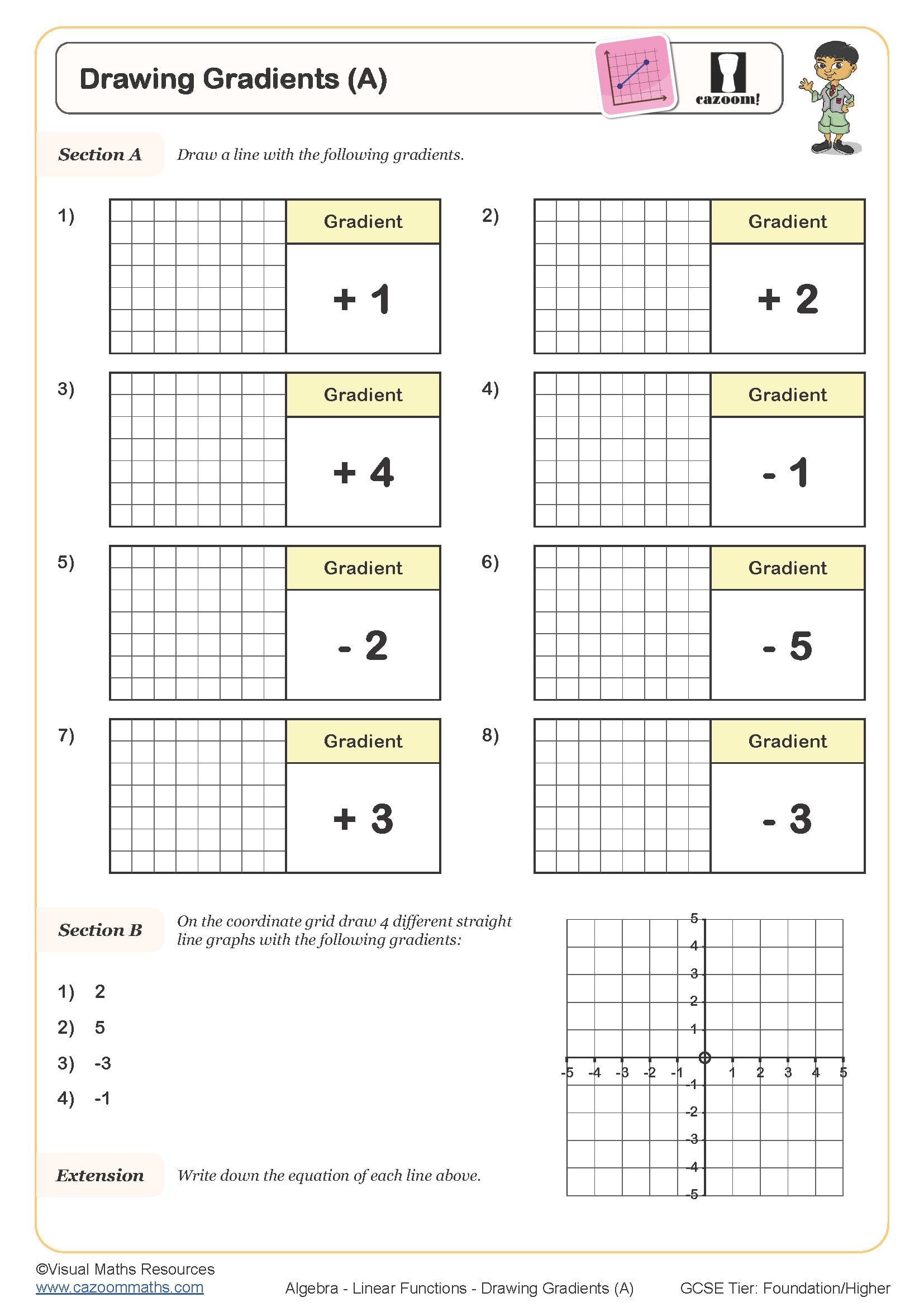
Drawing Gradients (B)
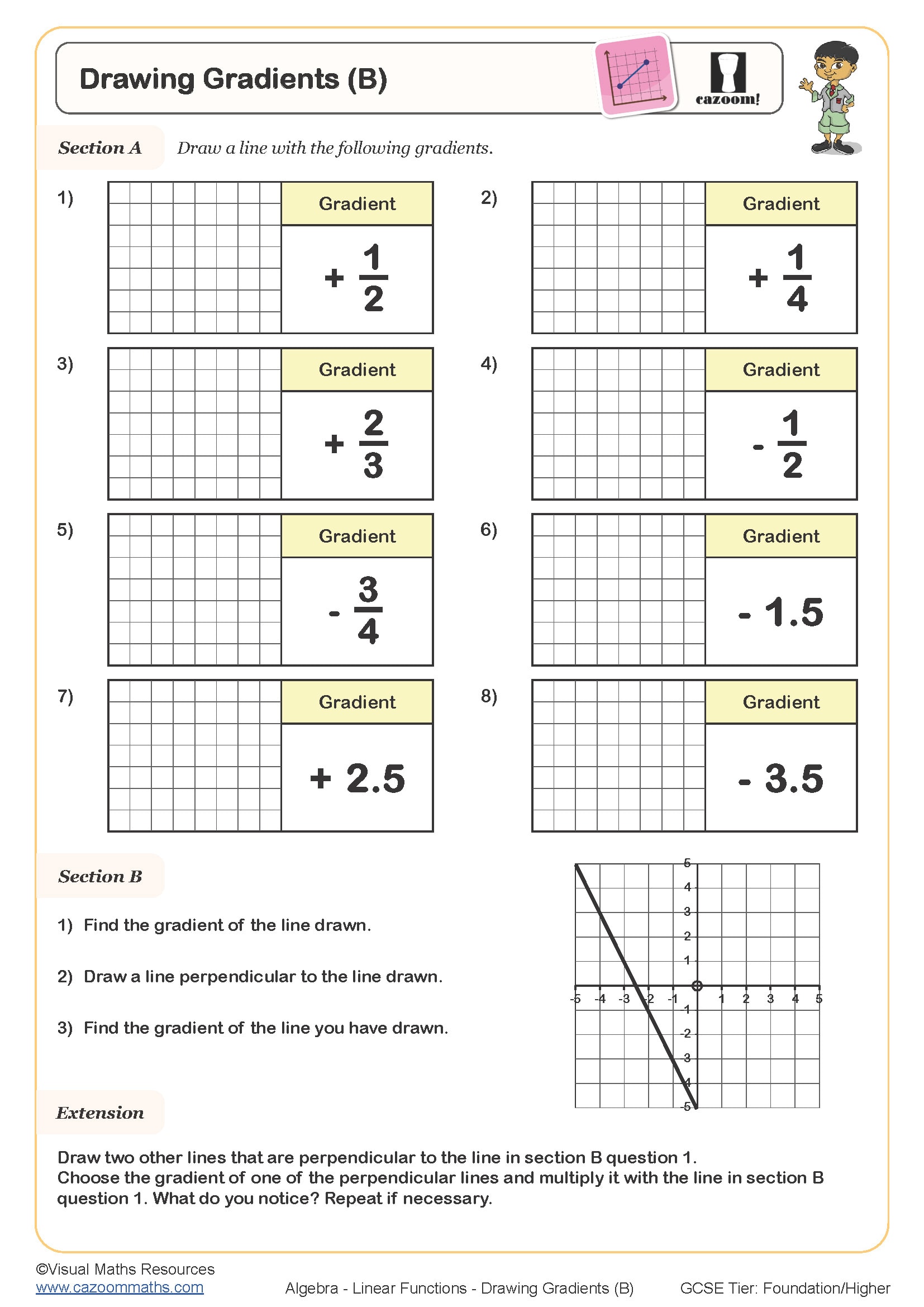
Drawing Straight Line Graphs
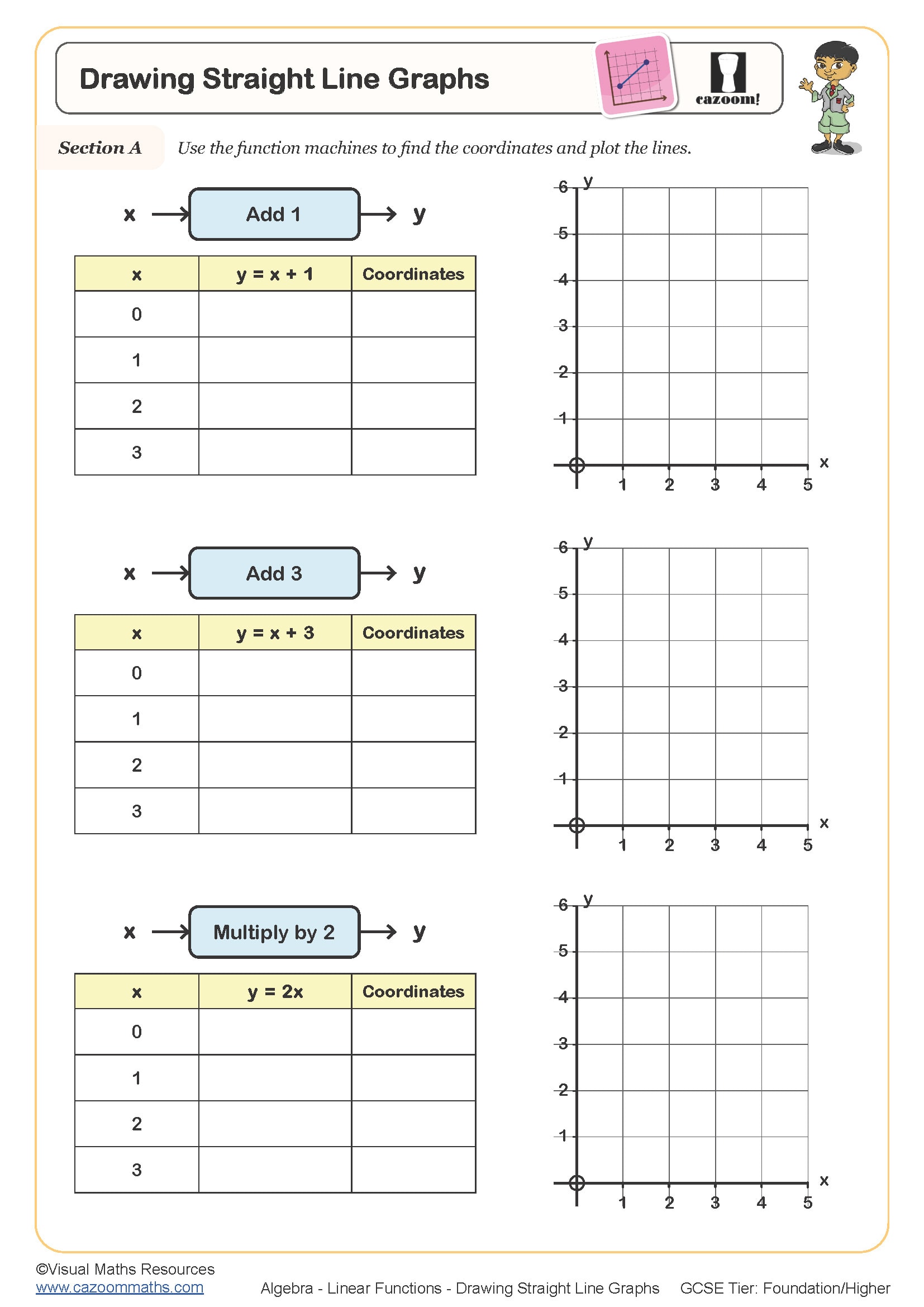
Finding Gradients (A)
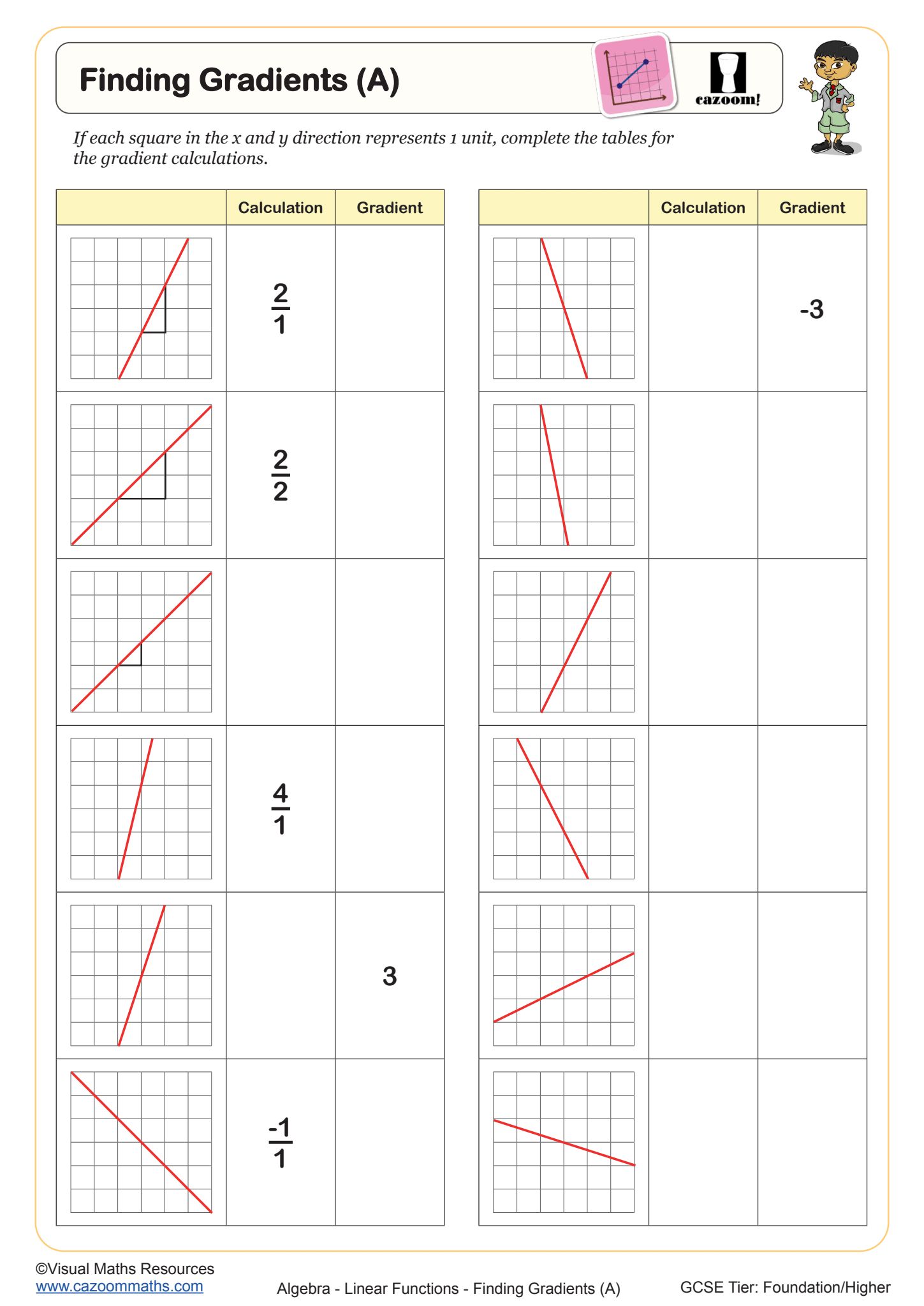
Finding Gradients (B)

Finding Gradients (C)
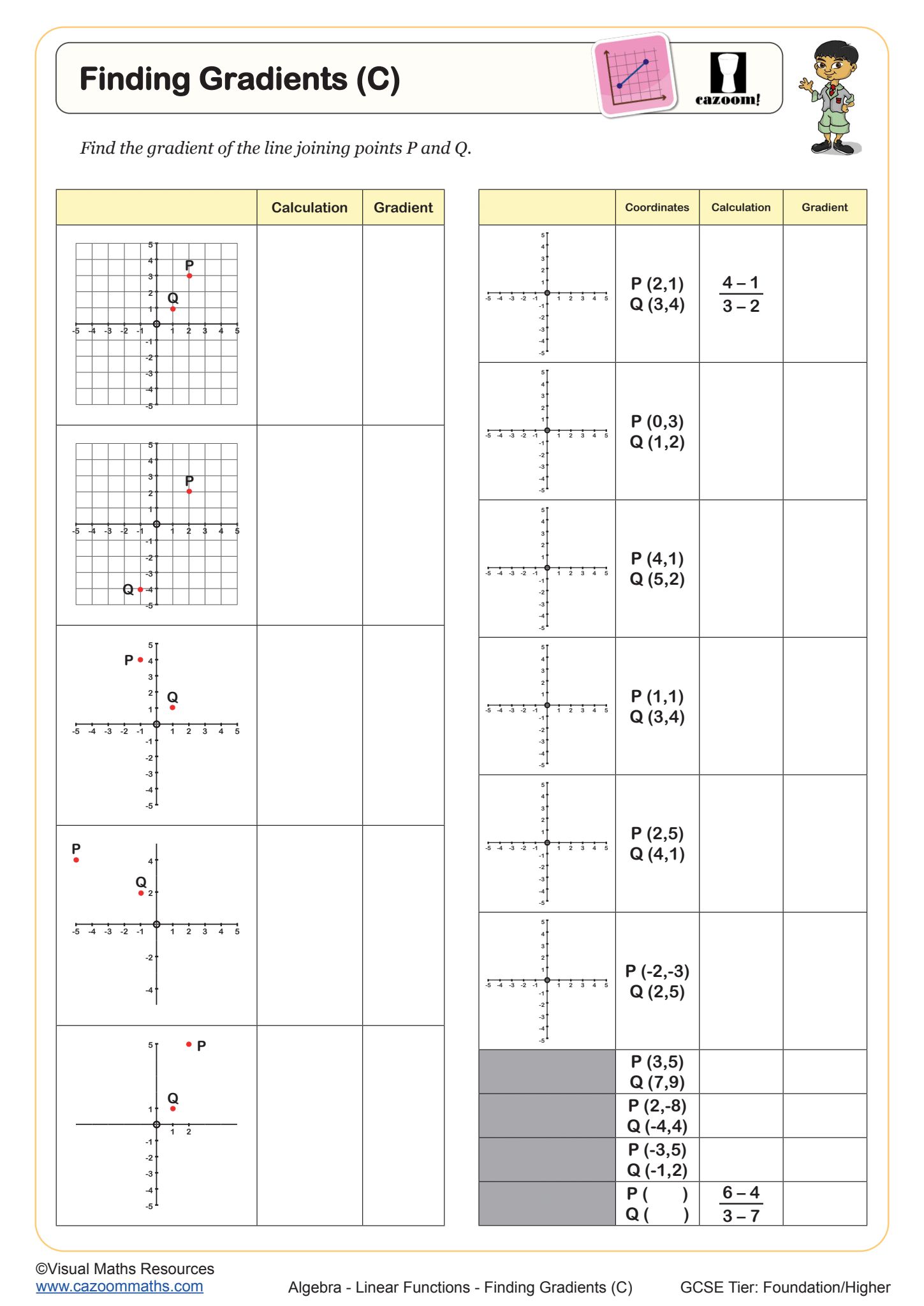
Finding the Equation of the Line (A)
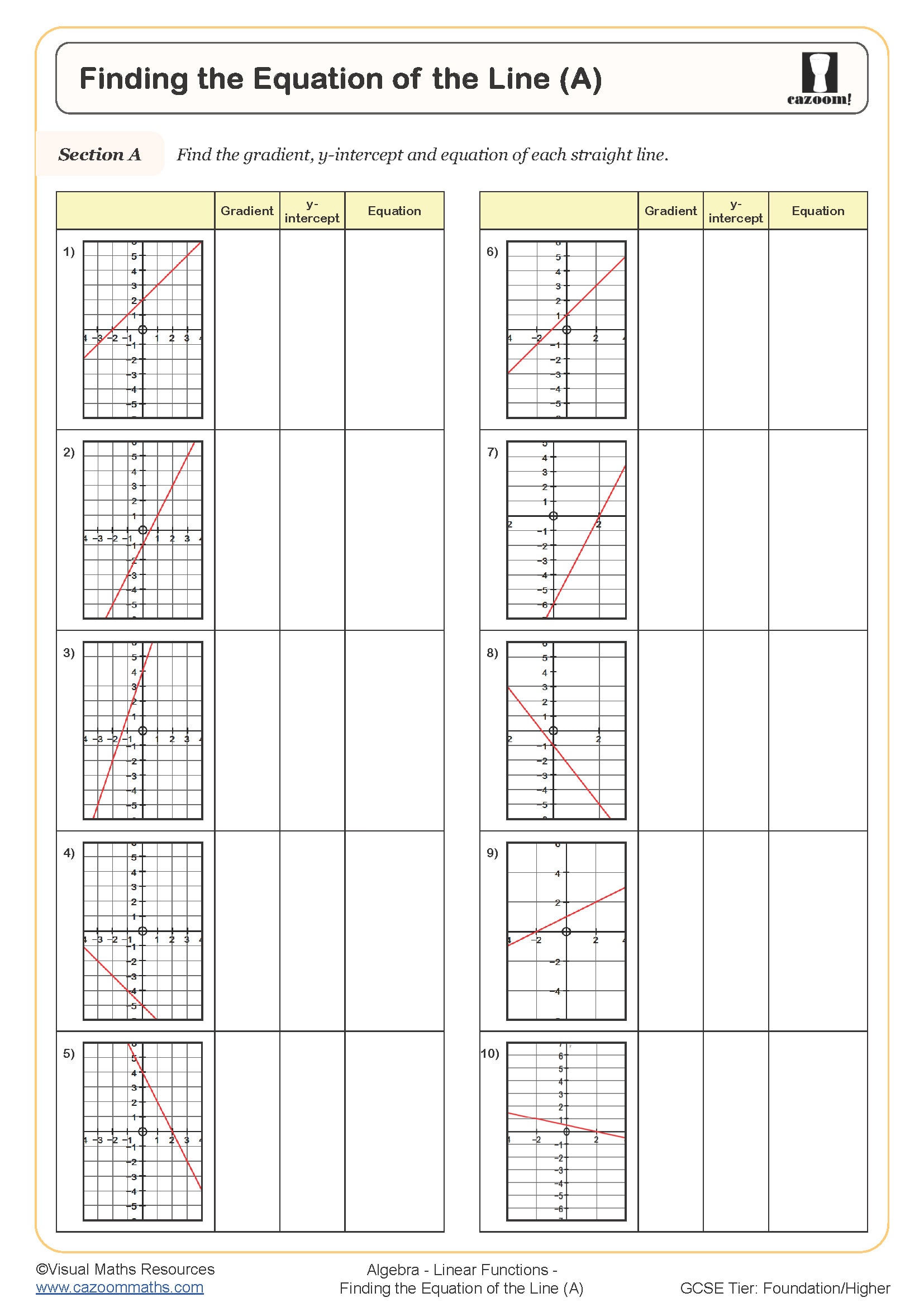
Finding the Equation of the Line (B)
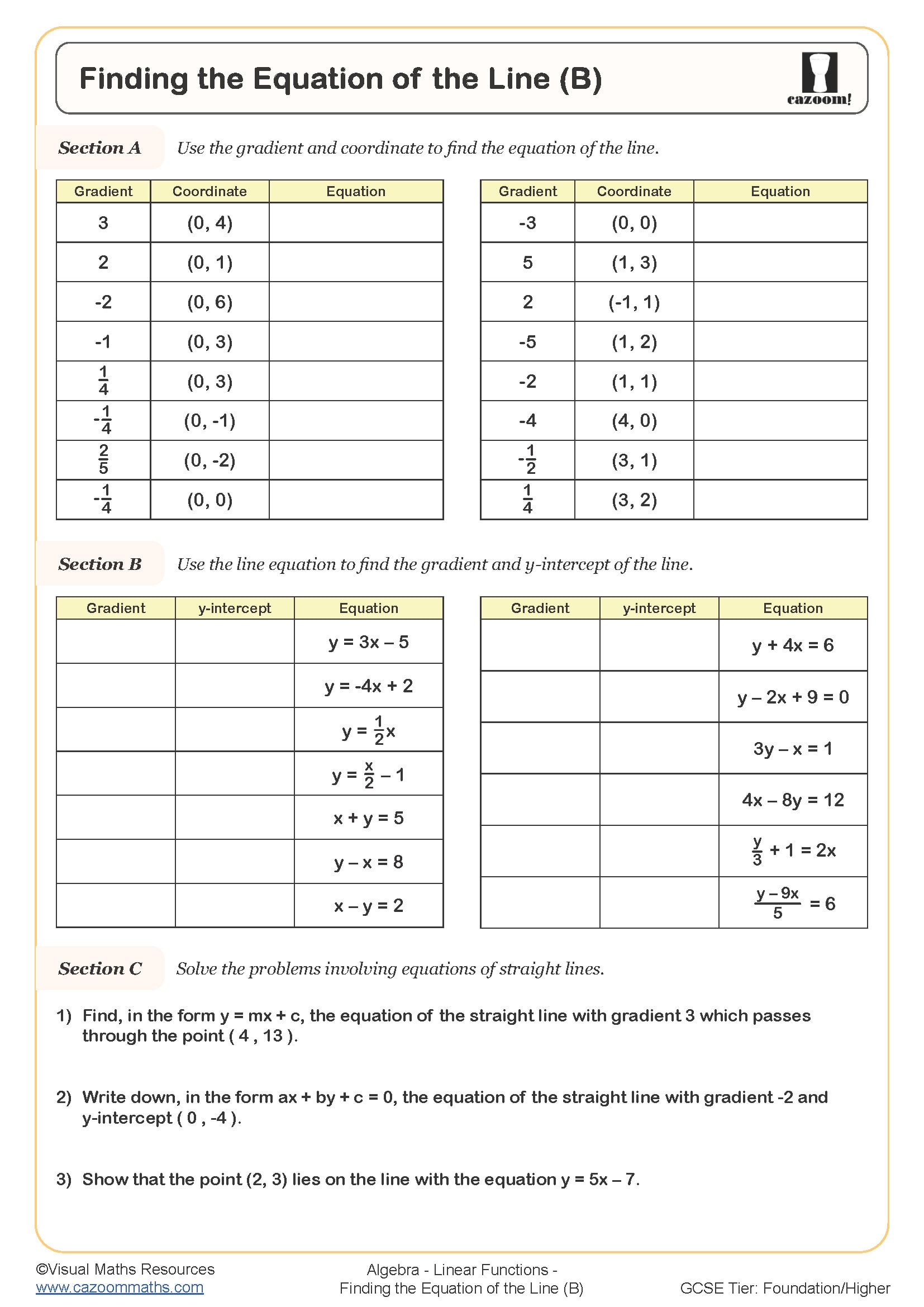
Finding the Intercepts
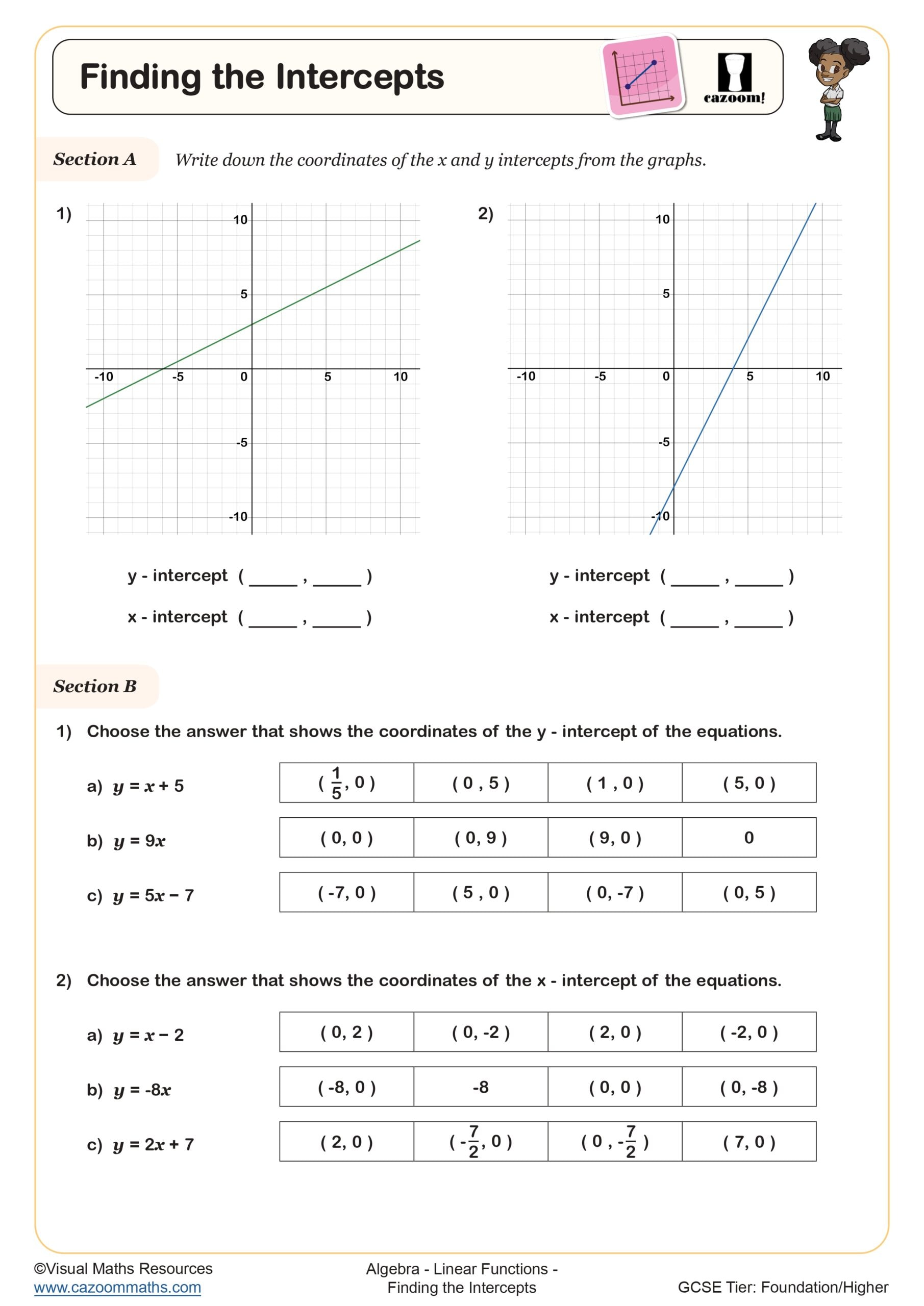
Investigating Straight Line Graphs

Linear Functions (A)
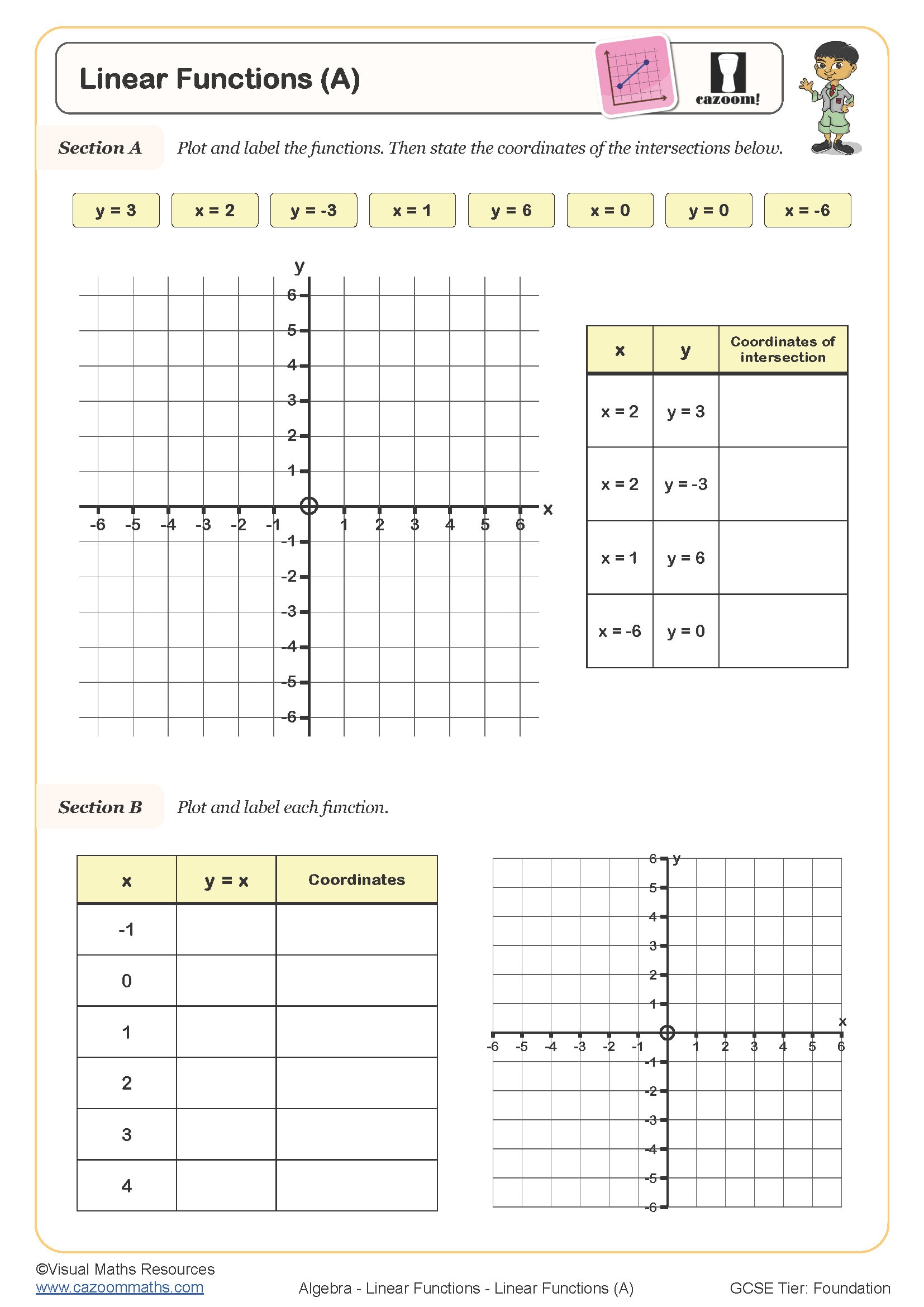
Linear Functions (B)
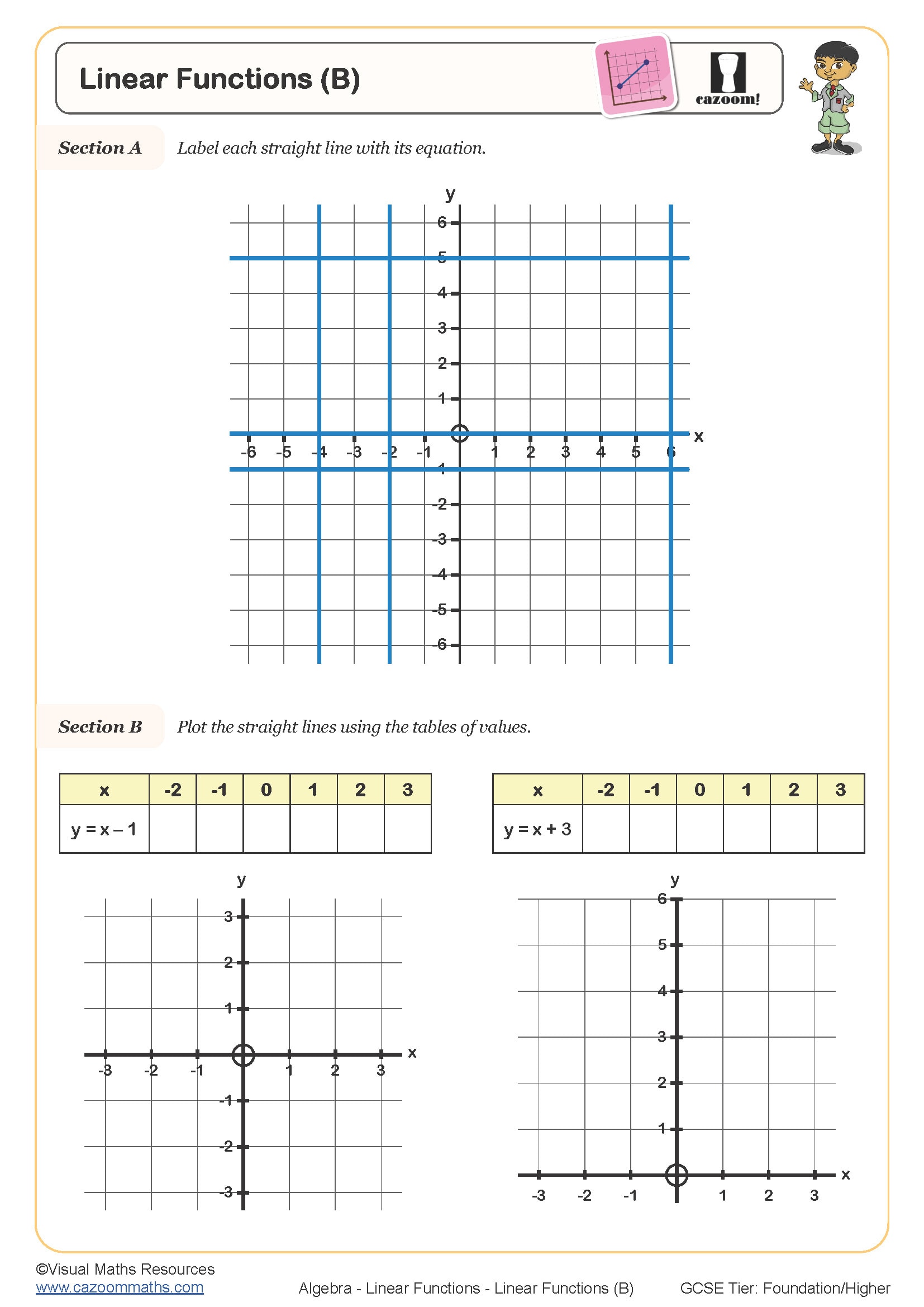
Linear Functions: Card Sort
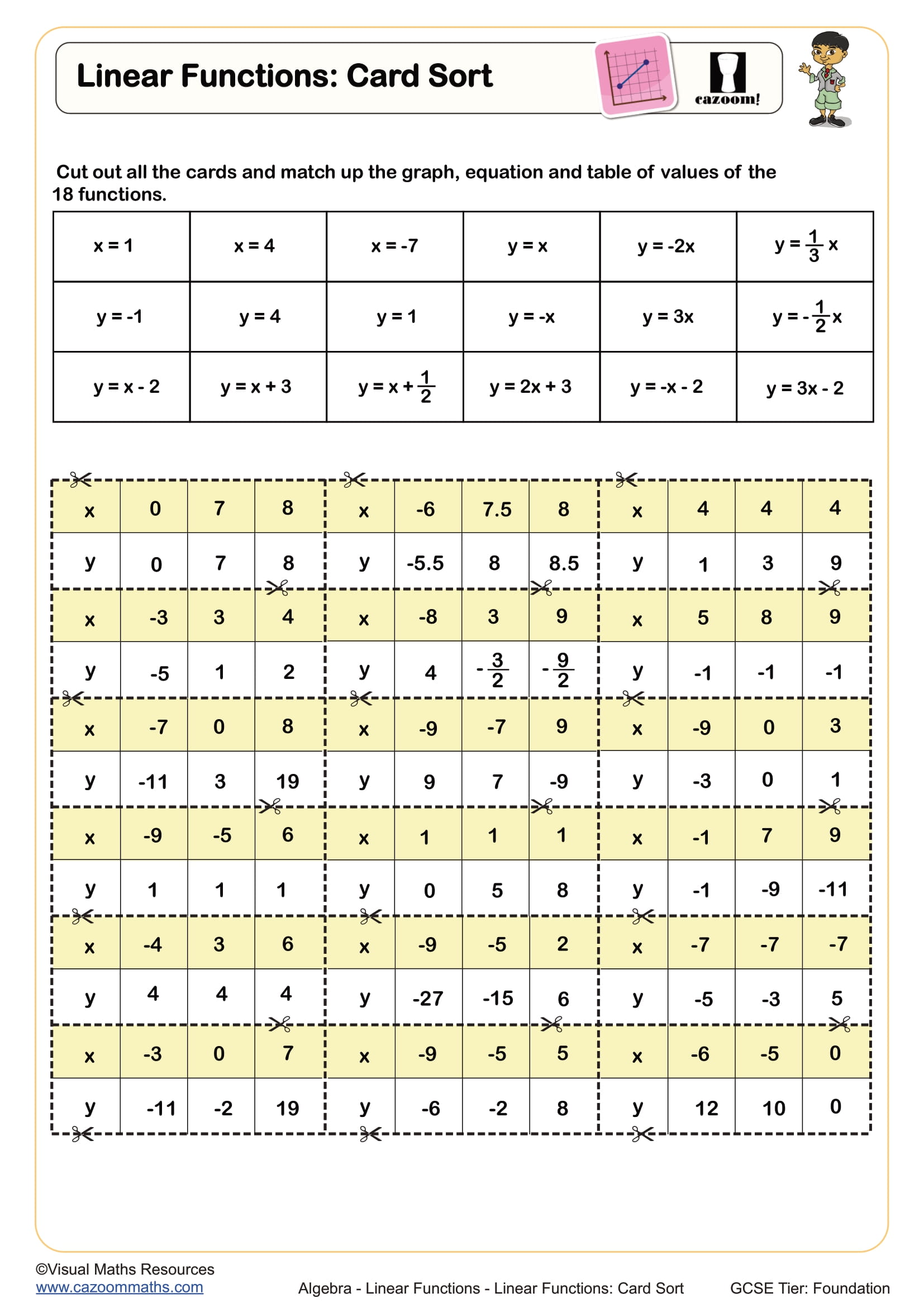
Linear Functions: y = mx
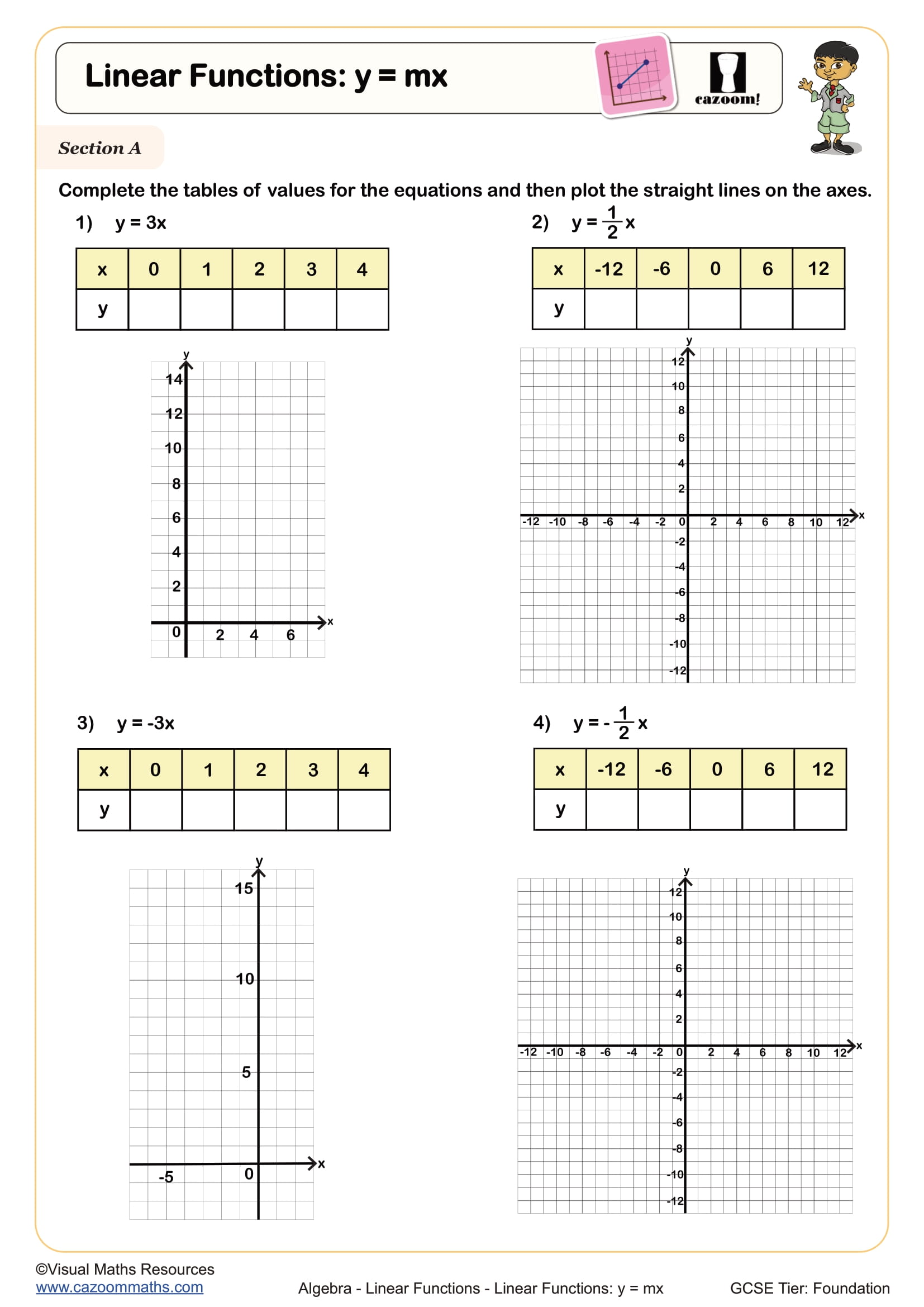
Linear Functions: y = x + c
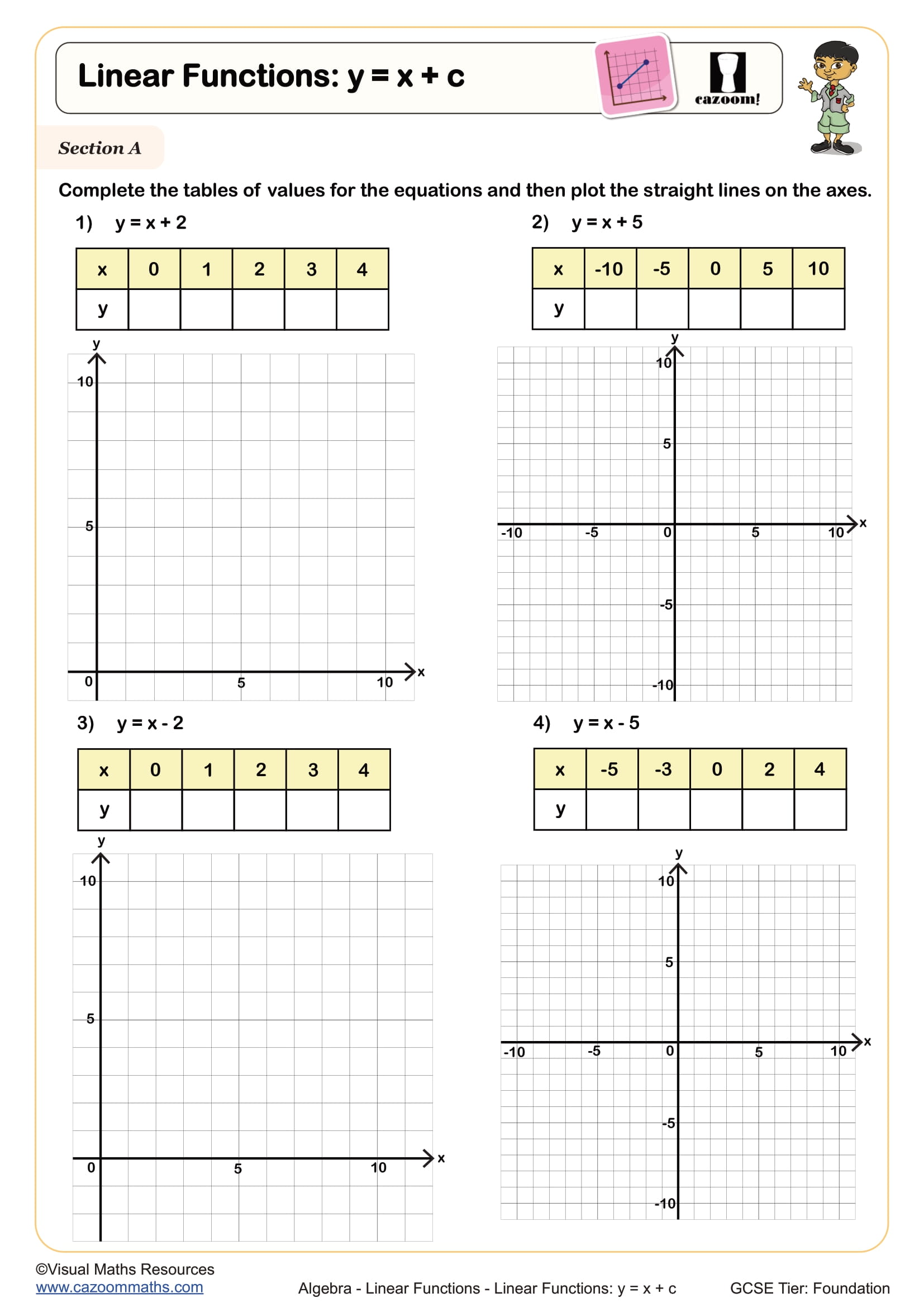
Lines Parallel to the Axes
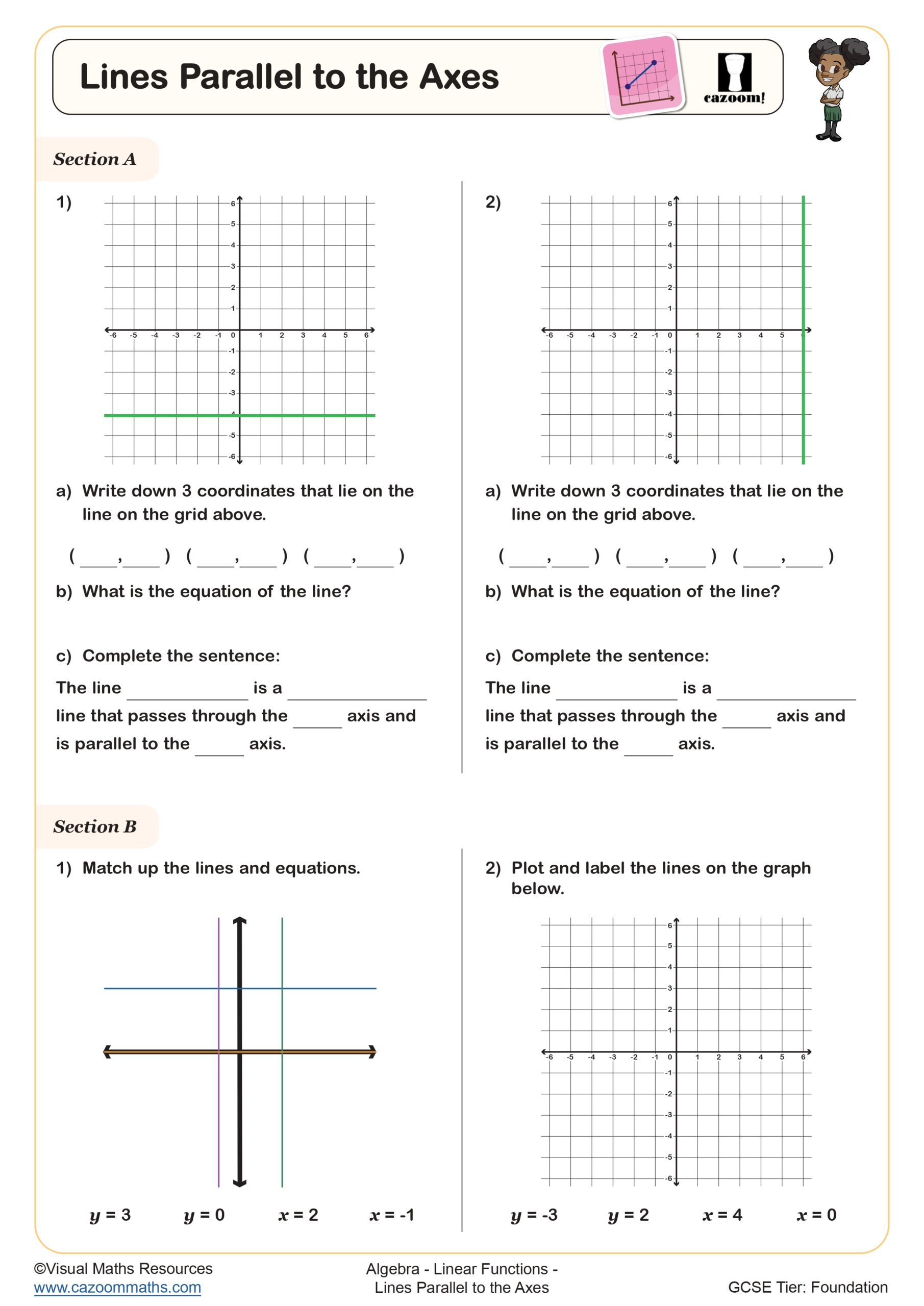
Straight Line Equations and Tables of Values (A)
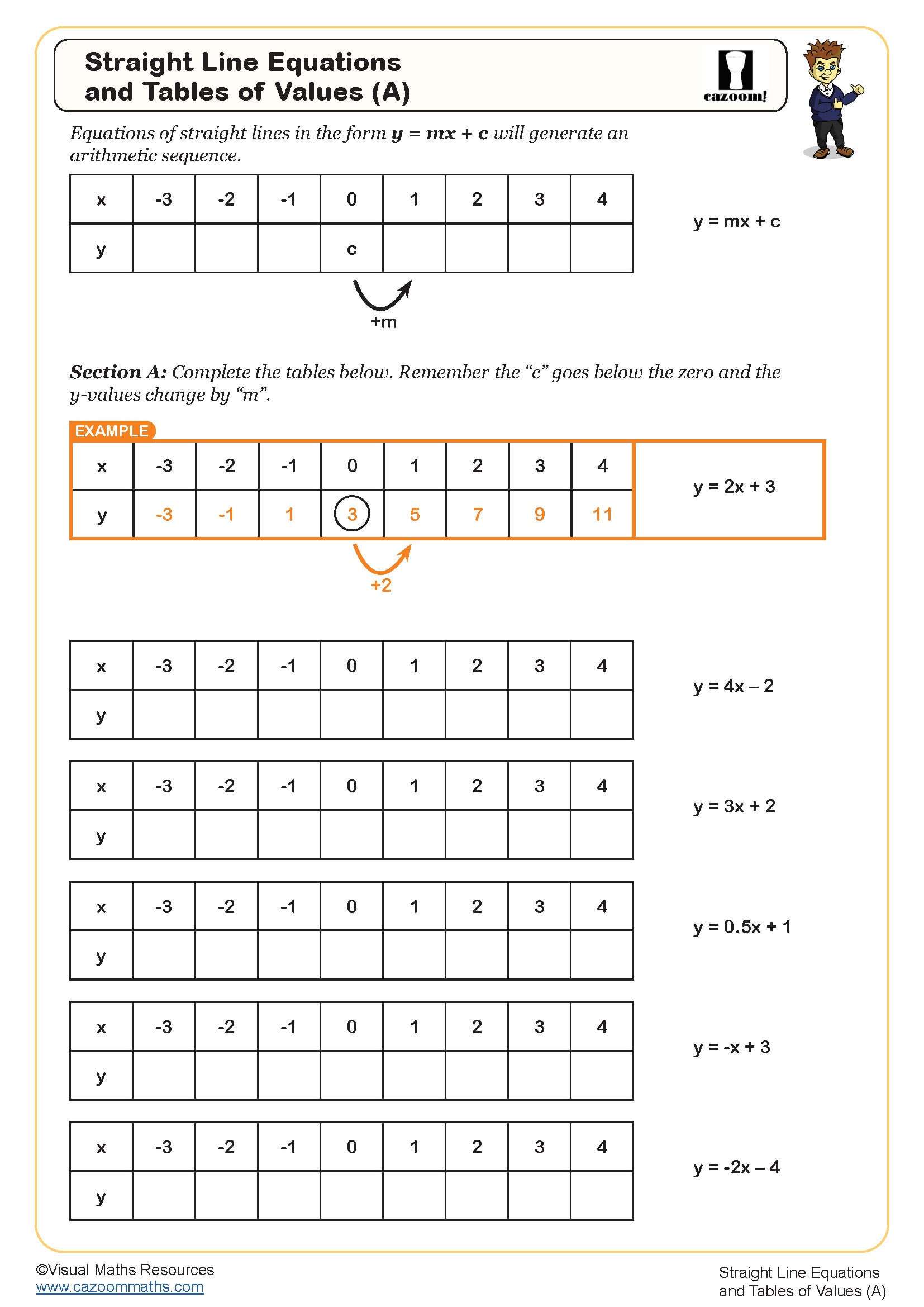
Straight Line Equations and Tables of Values (B)
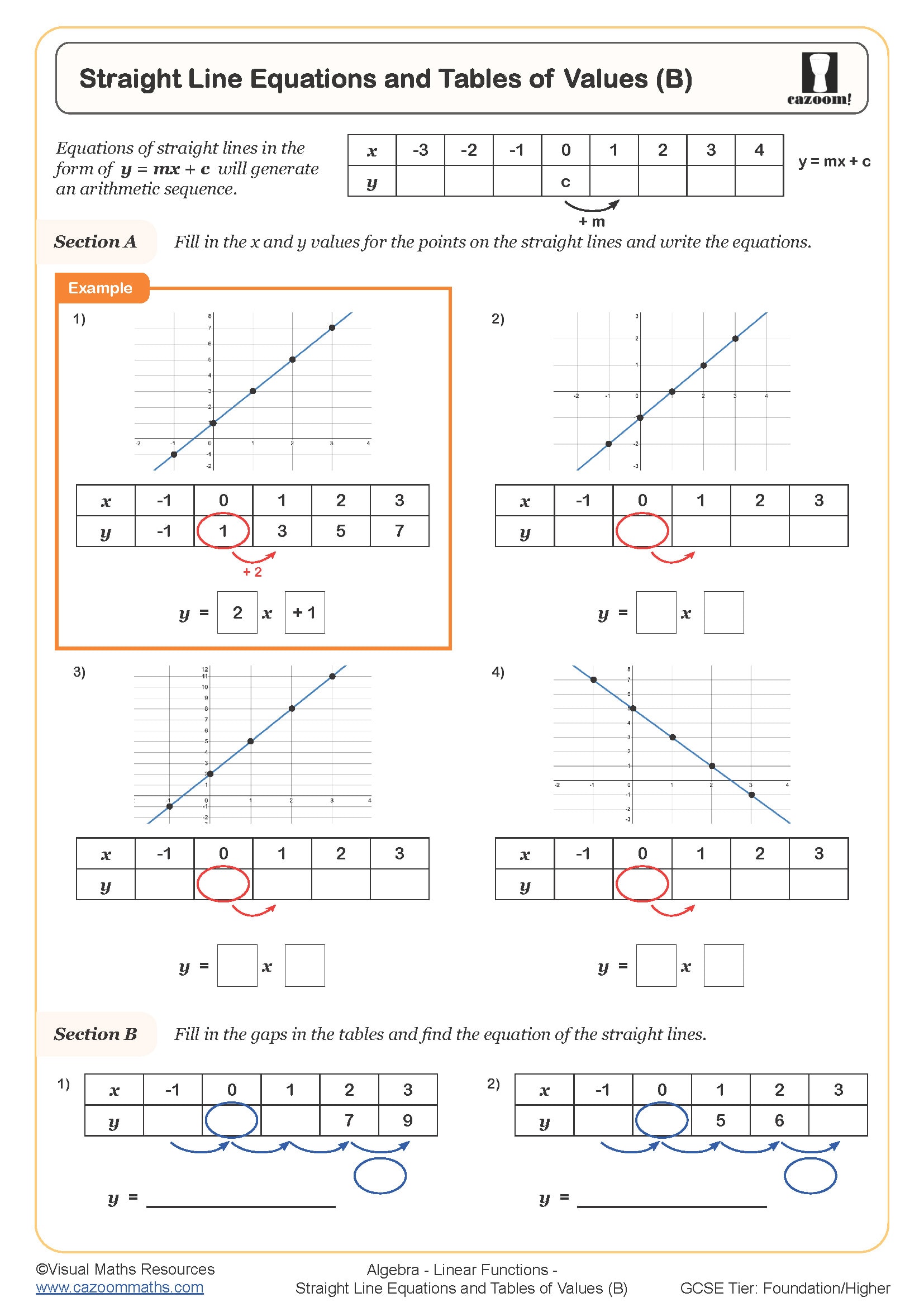
Improve Test Confidence With Year 9 Linear Functions Worksheets
Linear functions form the foundation for advanced mathematical topics, making mastery in Year 9 crucial for future success. The worksheets break down abstract algebraic concepts into practice-based learning steps through coordinated exercises that involve coordinates, gradients, and equation manipulation. Students learn to read graphs as they build their ability to move between different mathematical representations. The structured method helps students grasp the ordered sequence of steps and fundamental connections which create linear functions that are dependable and efficient. The materials require consistent practice to develop automatic skills, which students need for solving complex problems during exams.
Specific learning benefits include:
• Mastering gradient calculations and interpretations
• Developing coordinate geometry fluency
• Strengthening algebraic manipulation techniques
• Building graph-sketching accuracy
• The study of y-intercepts and their significance forms the basis of this research.
• Creating connections between tables and equations
• Preparing for quadratic function studies
What Makes Year 9 Linear Functions Worksheets So Effective?
The collection progresses from concrete plotting exercises through pictorial representations to formal algebraic notation, following proven pedagogical principles. The resources provide complete worked examples which demonstrate mathematical reasoning to show students how to choose methods and avoid typical errors. The materials follow an organised structure, which helps students learn new content while also supporting their review process through easy-to-understand visual arrangements that minimise mental effort.
The worksheets in this collection include:
• Graphing Fundamentals — establishing accurate plotting techniques and coordinate skills.
• Gradient Mastery Series — calculating and constructing lines with various slopes.
• Equation Finding Tasks — determining linear equations from given information.
• Function Representations — connecting tables, graphs, and algebraic forms seamlessly.
• Special Cases and Extensions — exploring horizontal, vertical, and parallel lines.
• Problem-Solving Challenges — applying linear function knowledge to puzzles and. investigations
Why Year 9 Linear Functions Worksheets Beat Textbook Exercises
Traditional textbooks often present linear functions as isolated topics, but these worksheets create meaningful connections across mathematical strands. Teachers can utilise the differentiated structure to provide students with suitable work assignments immediately, thereby reducing their need to spend long hours on resource modification. The answer sheets contain solutions together with explanations of typical mistakes, which enable teachers to use the marking process as an educational moment. The materials follow the exact standards of the UK curriculum and fulfil all requirements for GCSE education. The different question types maintain student interest while making sure all parts of the specification get proper attention. Teachers can identify student learning needs by following the progression pathways, which outline specific areas for additional support. The pre-drawn grids and structured layouts of these tools help students save time, which they can then use for actual learning during lessons.
Why Real-Life Maths Starts With Year 9 Linear Functions Worksheets
Linear relationships govern countless real-world situations, from mobile phone tariffs to climate data analysis.
• Converting currencies for international purchases and travel planning
• Calculating journey times using speed-distance relationships
• Understanding utility bills with standing charges plus usage rates
• Analysing fitness tracker data showing consistent improvement
• Programming game physics with constant velocity motion
• Interpreting scientific data from experiments
• Planning budgets with fixed and variable costs
• Modelling temperature changes and weather patterns